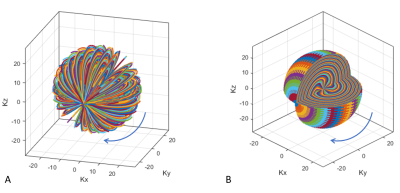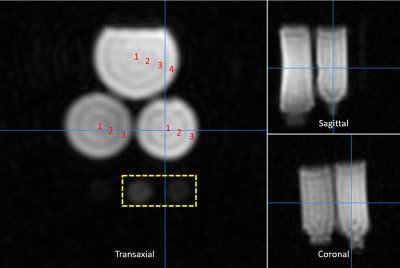Kwan-Jin Jung1 and Brad Sutton1,2
1Beckman Institute for Advanced Science and Technology, University of Illinois at Urbana-Champaign, Urbana, IL, United States, 2Electrical & Computer Engineering, University of Illinois at Urbana-Champaign, Urbana, IL, United States
1Beckman Institute for Advanced Science and Technology, University of Illinois at Urbana-Champaign, Urbana, IL, United States, 2Electrical & Computer Engineering, University of Illinois at Urbana-Champaign, Urbana, IL, United States
Sodium MRI
is challenging due to its low sensitivity and short T2 and hence a
three-dimensional sequence with a spiral trajectory has been applied. The
spiral trajectory was shortened in the TPI method by accelerating the span at
the k-space origin using a radial start and then transiting into a spiral
trajectory. This popular TPI method, however, requires a very high gradient
slew rate when the 3D cone approaches the polar pole. This drawback has been
resolved by rotating a two-dimensional disc filled with interleaved TPI
trajectories. This method achieved the faster sweeping of TPI as well as a
uniform gradient slew rate over the sphere sampling. We are reporting some
artifacts in TPI-based scans not only in our study but also in other studies.

